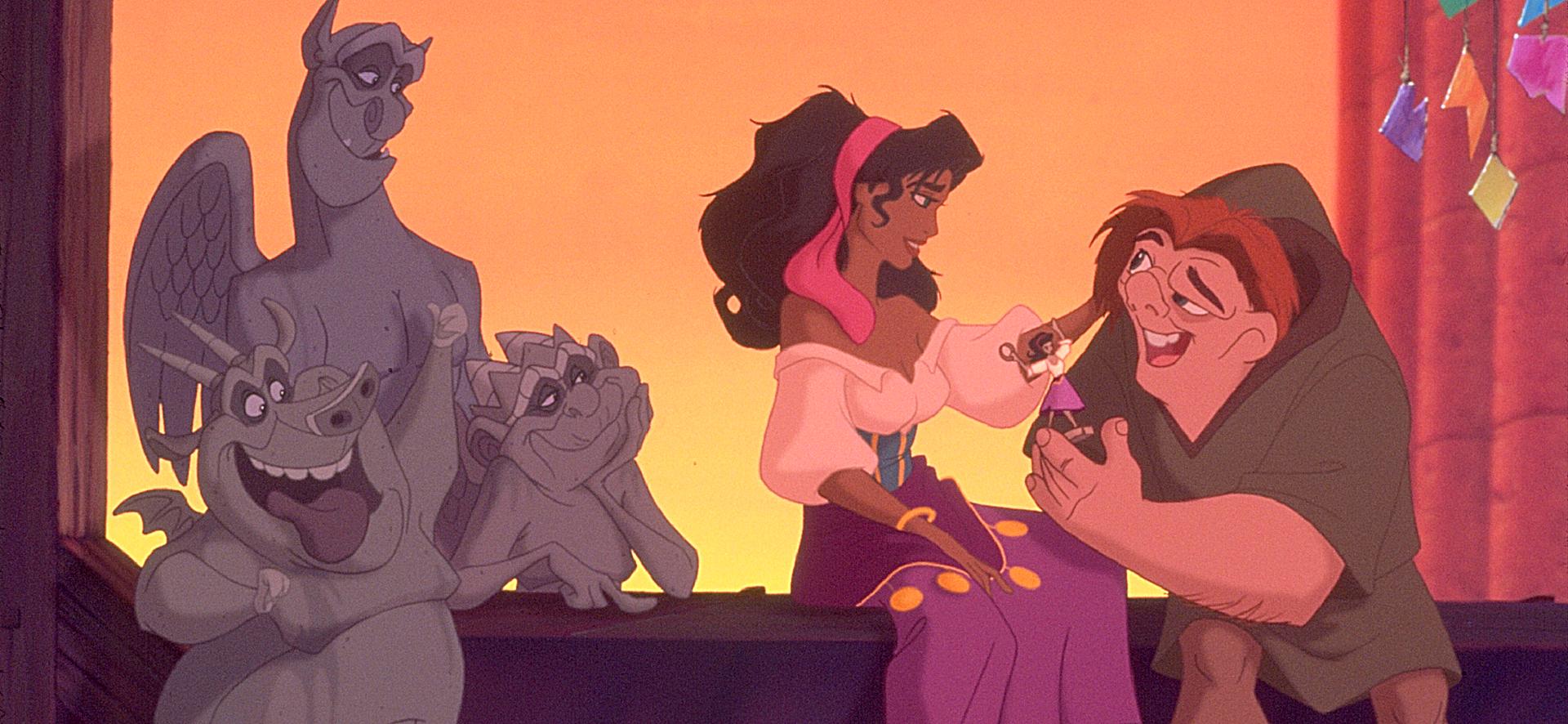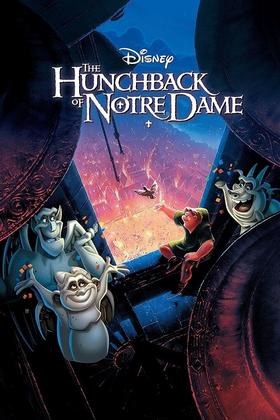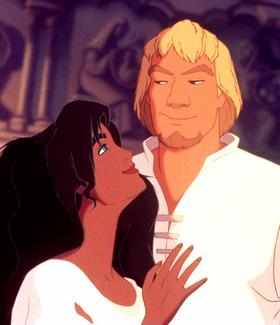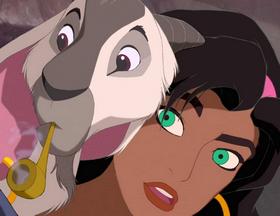The Hunchback of Notre Dame
Reviewed by: Marcus Mann
STAFF WRITER
| Moral Rating: | Average—with caution (somewhat offensive) |
| Moviemaking Quality: |
|
| Primary Audience: | Adults Young-Adults Teens |
| Genre: | Animation |
| Length: | 1 hr. 31 min. |
| Year of Release: | 1996 |
| USA Release: |
June 21, 1996 |
| Featuring |
Tom Hulce … Quasimodo (voice) Demi Moore … Esmeralda (voice) Jason Alexander … Hugo (voice) Jim Cummings … Guards / Gypsies (voice) David Ogden Stiers … Archdeacon (voice) See all » |
| Director |
Kirk Wise Gary Trousdale |
| Producer |
Roy Conli Don Hahn Philip Lofaro Walt Disney Animation Studios, Walt Disney Feature Animation, Walt Disney Pictures |
| Distributor |
Disney’s animators have done it again. A genuine blockbuster! Spectacular animation, great music and charming characters highlight this adaptation of Victor Hugo’s classic tale.
Quasimodo (the “hunchback”) is a lonely outsider who dreams of leaving the protection of Notre Dame for just one day. He ventures into the city (Paris) during the annual Festival of Fools against the wishes of his master, the self-righteous, evil Judge Frollo. “Topsy-turvy”, the song for the celebration, describes very well the rest of the story as Quasimodo’s world turns upside down. During the celebration, he is crowned “King of the Fools” and finds himself falling instantly in love with the Gypsy dancer Esmeralda. Joy turns quickly to sorrow as the crowd cruelly mocks and rejects him for his misshapen appearance, failing to see the charm which lies below his odd looks.
Back in the safety of the Cathedral, Quasimodo is at first heartbroken to find that Esmeralda is in love with another, yet he ultimately risks everything to bring the two lovers together. In the end, the entire city of Paris owes Quasimodo a great debt as he teaches the people the important lesson of acceptance and love. Paris learns to appreciate the unique values of the outcast Gypsies and the disfigured hunchback.
As Christians, we find this to be an admirable lesson. The Bible teaches that all the people in the world are the miraculous creation of God (in God’s own image) no matter the color of skin or the standard of beauty. Gratefully, Disney’s adaptation of the novel makes the great Cathedral, and it’s priest, the protector and sanctuary of the mistreated; rather than an evil oppressor. Disney erects a clearly evil judge as the villain, making it easy for the entire audience to distinguish the good guys from the bad guys.
The major weakness of this film lies in it’s portrayal of evil judge Follo’s lust for Esmeralda. The scenes which deal with this topic are intense, dark and definitely adult in nature. If indeed this film were intended for younger children (as the toy marketing would indicate), then Disney has sadly missed the mark.
“The Hunchback of Notre Dame” is easily the best Disney animation since “Beauty and Beast.” Older children, teenagers and adults will thrill to the adventures of this likable bell-ringer, but parents may want to preview it before taking their younger kids.


Many people are complaining that the villain is religious and yet evil. I hate to break this to you, but in the time period this story is set in, the church had a lot of power and many people abused that power. The Hunchback Of Notre Dame novel demonstrates how that power was abused.See all »
Moral rating: Good / Moviemaking quality: 5
A few small concerns though: Esmeralda does a palm reading and Frollo prays to Mary during the “Hellfire” song. Anyone with common sense, saved or unsaved, should know that palm reading is dumb and meaningless and does not determine anything about anyone. Esmeralda is said to practice witchcraft, at one point, but it did not look like witchcraft or occult at all; she simply used escape smoke to run from Frollo’s soldiers. Only thing that looked like witchcraft, at all, was the palm reading she did to Quasimodo, but like I said, common sense people.
Moral rating: Good / Moviemaking quality: 4
My complaint, however, is that Esmeralda, like Barbie dolls, puts an unrealistic pressure on girls to look like her. Her measurements are way out of proportion, and it puts up a standard of thin, voluptuous bodies, screaming “sex,” that most of us never achieve. The low cut dress is very inappropriate! The scene about the King’s burning desire for her, and how she will burn in hell if she doesn’t give in it his lusts is extremely inappropriate for children.
Lastly, the ending part was a bit intense with the bad guy trying to kill the good ones. This film sends confused religious messages: the priest is a great guy, but the gypsy sings about hypocrisy, and the people are praying selfish prayers. This seemed to go right over our 7 and 4-year olds’ heads though. Great theme: a monster is what you are inside, not out.
Twice in the movie, the dialogue makes an oblique reference to the all-knowing eyes who will bring judgment on evil-doers. A glance toward heaven lets us think for a moment that the reference is toward God. However, both times, the view immediately pans to the gargoyles. Indeed, at the end of the movie, judgment comes not from God but the stone characters come to life.
Though the portrayal of a priest is warm, in this movie with many religious themes, the message is quite blatant that God is irrelevant to the discussion. The animation is excellent, but Disney does a disservice by marketing the movie to children. This movie has a dark, haunting atmosphere, certainly unsuitable for children due to the sexual content and misguided religious references.
It is filled with violence. The opening scene depicts a mother being killed as her child is ripped from her arms …then the child almost being murdered because of his deformities. …My twins, who are 8, were terrified and had nightmares following this movie.
I am no prude and have no problem with the content (for adults)… I have a problem that they (have targeted) this movie to youngsters. Had I previewed it, I wouldn’t have taken my children. As an adult, I can appreciate the lush animation, but as a parent I was embarrassed and distressed at the dark and lustful undertones. …Has Disney forgotten “The Little Mermaid” and “Beauty and the Beast”?
I believe they need to take a serious look at their filmaking and marketing policies and remember who their audience is… CHILDREN.
Disney should go back to what it does best and deal with magical “make-believe” stories. My bet is that this may fare more poorly than Pocohantas (which was guilty of the same thing) and that the merchandising efforts will be a bust!







